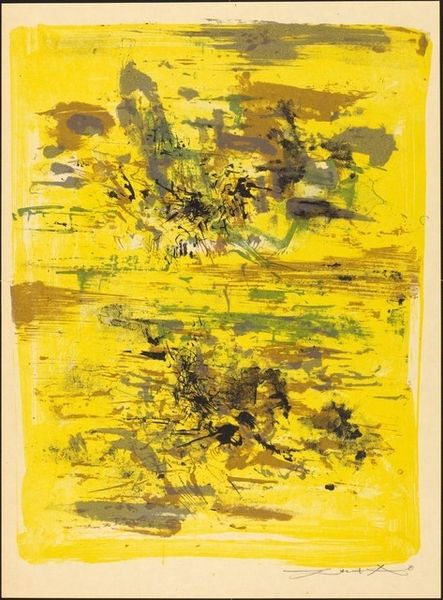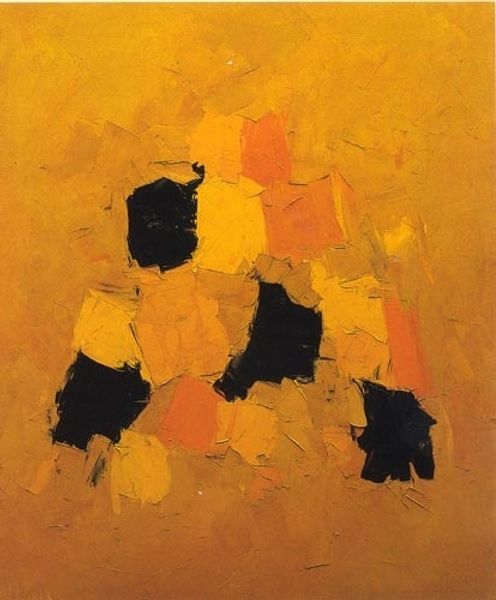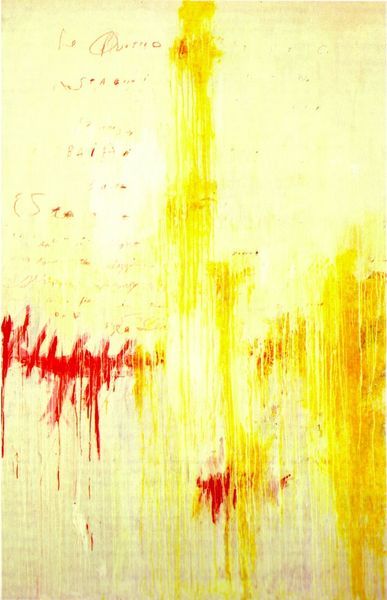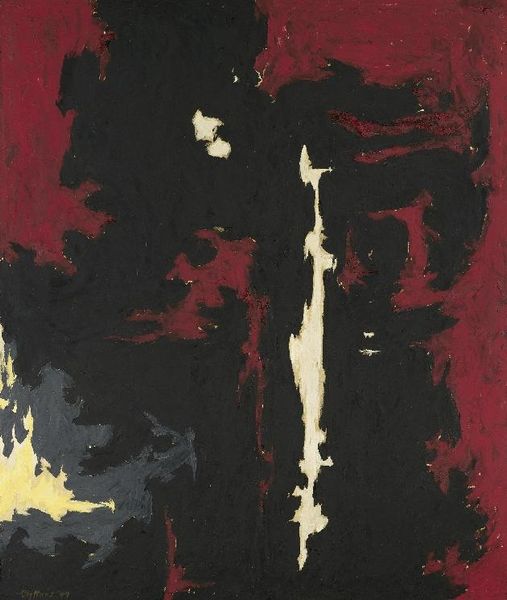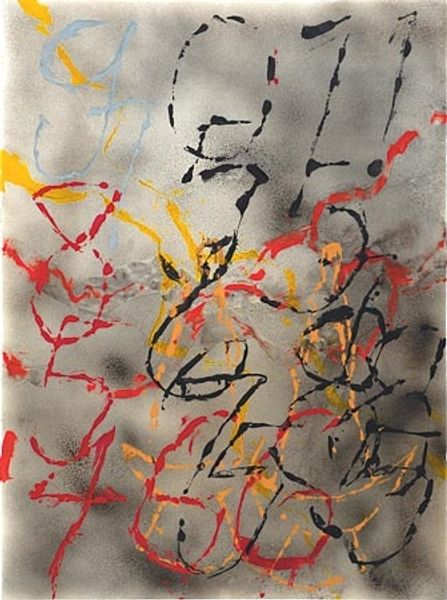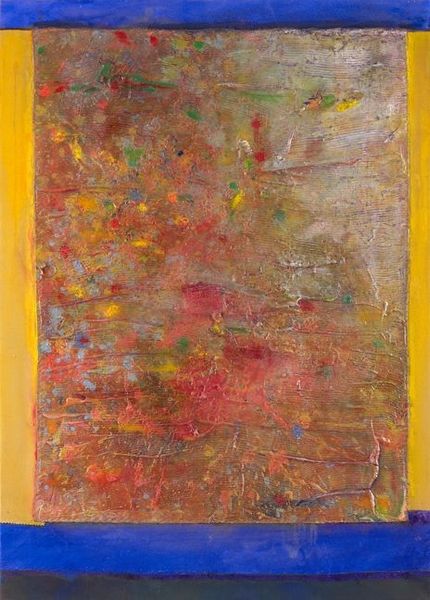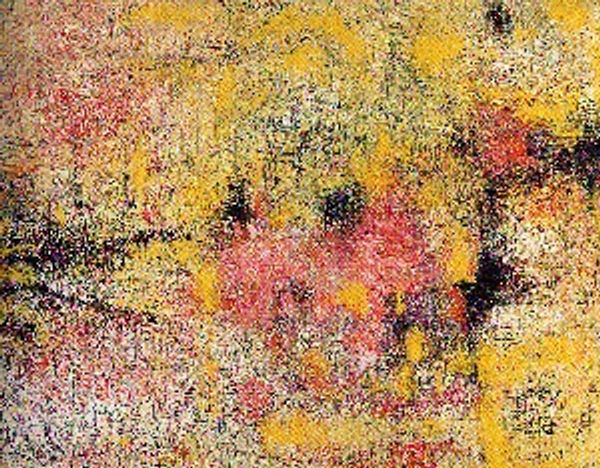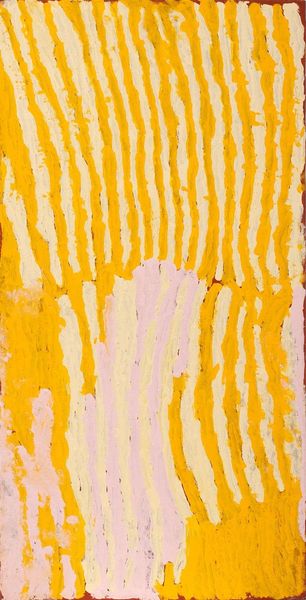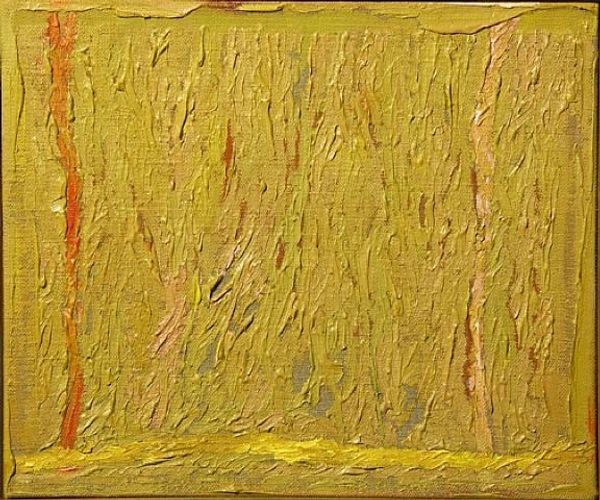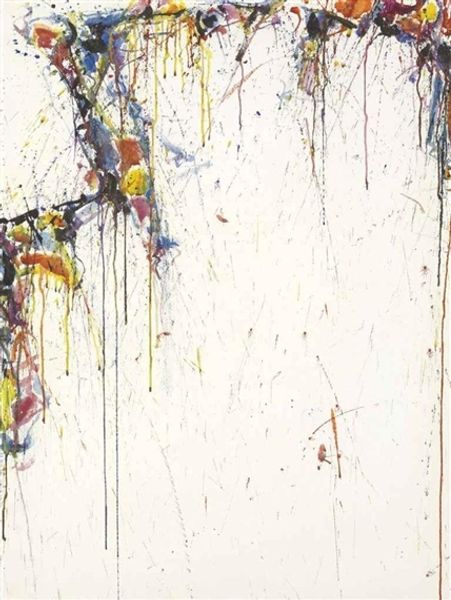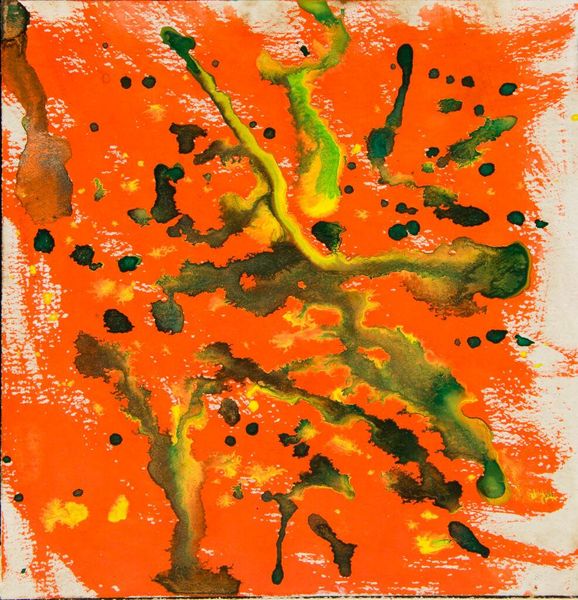
Copyright: Public Domain: Artvee
Curator: Standing before us is Paul Klee's striking 1940 oil painting, "Black, still in place." The abstract composition immediately grabs your attention. Editor: My initial response is one of muted tension. The black mass dominates the top, a stark contrast to the vibrant yellow, creating a sense of unease despite the brighter color palette. It feels heavy, like a weight. Curator: Let's consider the historical context. 1940 was a year of immense turmoil. The making of the work during this period would necessarily involve material shortages, rationing, not to mention restrictions on artistic expression under oppressive regimes. Klee himself was labeled a "degenerate artist" and removed from his teaching position prior to this period. The very making of the work then, would seem to offer defiance. Editor: Exactly, and the materiality itself communicates this tension. Klee was experimenting with the physicality of paint—how it can be manipulated, layered, almost sculpted on the canvas. It challenges this traditional idea of painting as just representation, instead engaging with matter, an almost aggressive act of making. And how does this relate to what it would feel like to live in those terrible years? The experience of trying to "build" an understanding of your world even as the basis for that world crumbles, as familiar society seems to fall apart. This may explain some of the composition’s “stacked” affect. Curator: I agree that the stacked nature, its crude application, conveys this tension and fragility, yet at the same time a persistence and a defiant insistence on structure. Editor: Perhaps the “black mass” can be viewed as the ominous clouds of war looming. Then you see this scattering of shapes that suggests dispersal, dislocation. Even at a loss to give representation, this picture still finds a way to communicate a lived emotional experience that resists an era of political repression. It reflects how artists working during conflict engage in a visual rhetoric through formal innovations—texture, color, line. The "degenerate" label then can be reclaimed as a term of subversive value! Curator: This painting encapsulates the intersection of art, personal experience, and global crisis—demonstrating how materials and the act of creation itself become powerful vehicles for expression and resilience. Editor: Ultimately, "Black, still in place" reminds us that even in the face of adversity, the urge to create, to give form to the formless, persists and helps shape narratives of resistance.
Comments
No comments
Be the first to comment and join the conversation on the ultimate creative platform.
